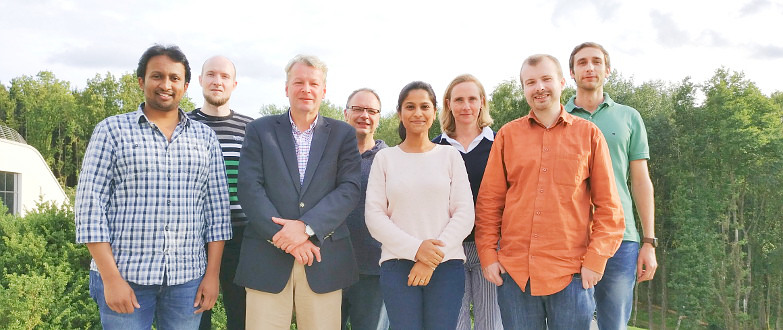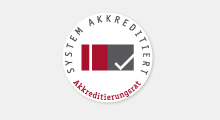Research
Research Focus: Software Engineering for Cyber-Physical Systems
Nowadays software is being used in application areas with high demands on specific quality attributes. Software is in most cases part of a system which is of a distributed nature. Furthermore, the extent of software products is steadily increasing. Modern engineering methods � e.g. object-orientation � complement established approaches and displace them in part.
The research conducted by our group is focused on methods for developing embedded software that meets high quality standards. Current goals concern object-oriented methods, especially with respect to applications in safety-critical, highly available real-time systems. The ongoing growth of software and its distributed architecture is particularly considered. Many projects are conducted in collaboration with industrial partners.
Current Projects
Collaborative Embedded Systems (CrESt)
https://crest.in.tum.de/
Contact Person: M.Sc. Nishanth Laxman
For years, there has been a significant shift in engineering of embedded and cyber-physical systems towards dynamically formed collaborative systems of cyber-physical systems. Dynamic system clusters are essential to technology-driven visions of the future, as exemplified by automatic transport of humans and things, Smart Cities, advanced medicine technology, intelligent factories, and assisted living.
The goal of the project �Collaborative Embedded Systems� (CrESt) is to create a framework for the development of collaborative embedded systems to address the novel challenges. The approach will build on the SPES development methodology and contribute to the competitiveness of the German industry in this highly promising field of application.
Automotive, Railway and Avionics Multicore Systems II (ARAMIS II)
http://www.aramis2.com/
Contact Person: M.Sc. Sebastian M�ller
Safety-critical applications in the domains automotive and avionics as well as the future topic Industry 4.0 show a clear and still increasing demand for digital processing power. This can be provided by multicore technologies. The cooperation project ARAMiS, successfully completed in March 2015, demonstrated that multicore processors can also be used in safety-critical applications.
Based on these findings, ARAMiS II aims at development processes, tools and platforms for the efficient use of multicore architectures available in industry. The ARAMiS II consortium started its work on October 1st, 2016. It consists of 33 partners and is scheduled for three years. The project budget is 24 Mio. Euros in total. ARAMiS II is funded by the German Federal Ministry for Education and Research with ca. 15 Mio. Euro. It is coordinated by the Karlsruhe Institute of Technology (KIT) in Germany.
Finished Projects
Embedded Multi-Core systems for Mixed Criticality applications in dynamic and changeable real-time environments (EMC�)
http://www.artemis-emc2.eu/
Contact Person: M.Sc. Sebastian M�ller
Embedded systems are the key innovation driver to improve almost all mechatronic products with cheaper and even new functionalities. They support today�s information society as inter-system communication enabler. A major industrial challenge arises from the need to face cost efficient integration of different applications with different levels of safety and security on a single computing platform in an open context. EMC� finds solutions for dynamic adaptability in open systems, provides handling of mixed criticality applications under real-time conditions, scalability and utmost flexibility, full scale deployment and management of integrated tool chains, through the entire lifecycle. The objective of EMC� is to establish Multi-Core technology in all relevant Embedded Systems domains.
EMC� is a project of 101 partners of embedded industry and research from 16 European countries with an effort of about 770 person years and a total budget of about 94 million Euro.
Automotive, Railway and Avionics Multicore Systems (ARAMiS)
http://www.projekt-aramis.de/
Contact Person: Dipl.-Math. Markus Damm
The German Ministry of Education and Research supports the development of novel computer processor concepts for the operation in future traffic systems. The goal of �ARAMiS� is the improvement of the operational safety of automobiles, trains and airplanes. Within the scope of ARAMis new concepts for the application of powerful computer processors with multiple cores in transportation and traffic systems are developed to increase the safety, efficiency and the comfort of those systems.
Up to now only single-core processors are used in airplanes and automobiles, because their behavior can be predicted with certainty which is a prerequisite for the certification of safety-critical systems. But single-core processors are reaching their limits and are increasingly disappearing from the market. The ARAMiS project unites well-known research institutes and fabricators from automobile-, transportation- and aircraft industries as well as hard- and software producers to develop highly performant multi-core processors.
ARAMiS is funded by the German Federal Ministry of Education and Research (BMBF) and more than 30 industrial partners.
Software Platform Embedded Systems 2020 XTCore (SPES XTCore)
http://spes2020.informatik.tu-muenchen.de/spes_xt-home.html
Contact Person: Dr. Mario Trapp ( mario.trapp@iese.fraunhofer.de )
The shift from traditional Embedded Systems to Cyber-Physical Systems increases system complexity and thus the demand for system quality. In order to develop high quality Embedded Systems, SPES_XTCore will create new and innovative methods and tools to assist the industry in creating innovative systems whose high complexity could not be handled by existing approaches. SPES_XTCore consists of six Engineering Challenges which depend on four transversal workgroups.
Within this project, the research group �Software Engineering: Dependability� of the University of Kaiserslautern works mainly on the assessment of development artifacts, incremental certification, modular safety case, and the modularization and composition of heterogeneous safety analysis techniques in in the application domains of avionics and automotive.
SPES_XTCore is funded by the German Ministry of Education and Research (BMBF) and unites 21 partners from research and academia from all over Germany, including well-known companies like Siemens, Daimler and EADS.
Virtual and Extended Reality for highest safety and reliability of Embedded Systems (ViERforES) - Phase 2
http://vierfores.iese.fraunhofer.de/
Contact Person: Dipl.-Inf. Max Steiner
01.01.2011 - 30.09.2013
The greater part of the microcontrollers produced worldwide is used in embedded systems with the applications ranging from domestic appliance to airplanes. Many devices that we naturally use in our everyday lives fall into this category. Embedded systems are of enormous technical and economic importance. Embedded systems are never �standalone� systems, but are always connected to and communicating with other systems, e.g. mechanical, hydraulic, pneumatic, electronic or information systems. These systems have a major influence on the properties of safety, reliability and availability and are thus decisive factors in automotive-, medical- and production engineering as well as the energy industry, all of which are application areas considered in the project. The primary goal of the project is the enhancement of the safety and reliability of complex technical systems by interlinking methods and technologies with these application areas. The methods and technologies are developed and evaluated tailored to specific applications as well as in a generally applicable way. This follows the goal of transferring methodological knowledge to the application areas and of generalizing the methods to enable a future-proof software engineering.
ViERforES is funded by the German Federal Ministry of Education and Research (BMBF).
Scalable Visual Analytics: Interactive Visual Analysis Systems of Complex Information Spaces (DFG-SPP)
http://visualanalytics.de
Contact Person: Prof. Dr.-Ing. habil. Peter Liggesmeyer
In research and development as well as numerous application areas fast growing data sets develop with ever higher complexity and dynamics. A central challenge is to filter the substantial information and to communicate it to humans in an appropriate way. Interactive visual data analysis techniques extend the perceptual and cognitive abilities of humans with automatic data analysis techniques. Only by a combination of data analysis (Data Mining) and visualization techniques an effective access to otherwise unmanageably complex data sets is possible. Visual analysis techniques make the unexpected more easily discoverable and help to gain new cognitions and insights.
DFG-SPP is funded by the German Research Foundation (DFG).
Virtual and Extended Reality for highest safety and reliability of Embedded Systems (ViERforES)
http://vierfores.iese.fraunhofer.de
Contact Person: Dipl.-Inf. Max Steiner
2008-07-01 to 2010-12-31
The greater part of the microcontrollers produced worldwide is used in embedded systems with the applications ranging from domestic appliance to airplanes. Many devices that we naturally use in our everyday lives fall into this category. Embedded systems are of enormous technical and economic importance. Embedded systems are never �standalone� systems, but are always connected to and communicating with other systems, e.g. mechanical, hydraulic, pneumatic, electronic or information systems. These systems have a major influence on the properties of safety, reliability and availability and are thus decisive factors in automotive-, medical- and production engineering as well as the energy industry, all of which are application areas considered in the project. The primary goal of the project is the enhancement of the safety and reliability of complex technical systems by interlinking methods and technologies with these application areas. The methods and technologies are developed and evaluated tailored to specific applications as well as in a generally applicable way. This follows the goal of transferring methodological knowledge to the application areas and of generalizing the methods to enable a future-proof software engineering.
ViERforES is funded by the German Federal Ministry of Education and Research (BMBF).
Innovation alliance for Embedded Systems, Software Plattform Embedded Systems 2020 (SPES2020)
http://spes2020.informatik.tu-muenchen.de/
Contact Person: Dr. Mario Trapp ( mario.trapp@iese.fraunhofer.de )
2008-07-01 to 2010-12-31
Embedded systems are of vital importance in many high-tech branches. Especially in Germany the high productivity- and quality-requirements that apply to any technical product �Made in Germany� must also be applied to embedded systems. German quality is well-known precisely in those areas that include a high proportion of embedded software, like avionics, automotive-, medical-, manufacturing- and automation engineering. The targeted development of high-quality embedded systems is a key competence. The management of increasingly powerful, comprising, distributed and thus more complex embedded systems is a scientific and technical challenge.
SPES2020 (�Softwareplattform Embedded Systems 2020�) is a national innovation alliance with the goal of professionalizing the cross-domain production process. SPES unites the effort of 8 research partners and 15 industrial partners (e.g. Siemens, EADS).
In this context the research group �Software Engineering: Dependability� works on the question of how software engineering and safety engineering can be interleaved more closely, e.g. by automatically deriving safety models from the software design and - vice versa - the integration of measures into the software development process to increase safety.



![[Logo des FB Informatik]](/logos/logo_fbi_167x60.png)




